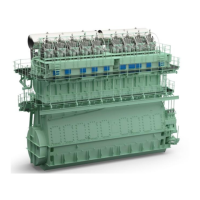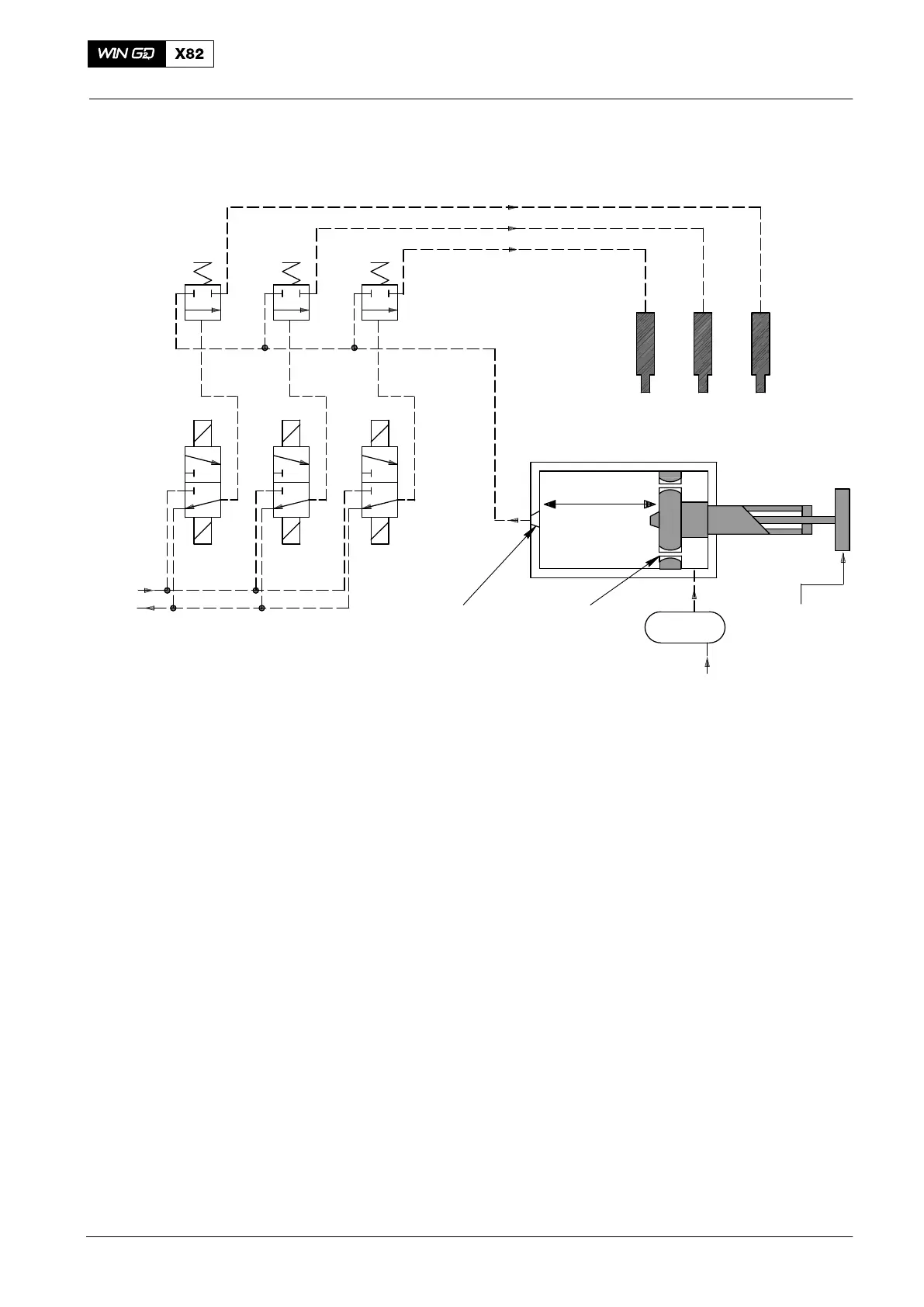Operation
4002−1/A1
Winterthur Gas & Diesel Ltd.
9/ 15
4.3 Fuel Injection Control
All components are shown in
the NO INJECTION position
Fuel Rail
Rail Valves
Fuel
Injection
Valves
Servo
Oil
Injection
Fuel Quantity
Piston
Return
Fuel Quantity
Sensor
Injection
Quantity
Seal for
Emergency
Stop
Injection
Control
Valves
Fuel Quantity
Signal
Fig. 7: Fuel Injection Control
4.3.1 Injection Valve Control Function
All injection valves related to the rail valves of a cylinder are controlled independently,
but with one common feedback signal for the injected fuel quantity.
Usually, all injection valves are activated at the same time. Special operation modes
enable the injection with only one or two injection valves, or with spray intervals
(multi−shot patterns) (see also 0280−1 WECS−9520 Injection control).
To improve the fuel spray at low load, one or two injection valves are cut out
automatically.
The FCM−20 is used to amplify control outputs up to the necessary signal strength for
the rail valves.
4.3.2 Rail Valve ON-time Measurement
The supply to the rail valve is cut off as soon as the valve piston has moved. This is
the measured ON-time and is shown in the remote control.
The measured ON-time gives data about the rail valve condition.
4.3.3 Initial Set-pulse
Because the rail valves are bistable, their initial position is not specified. Thus, at
engine standstill, set-pulses are sent to the rail valves at intervals to get a specified
position.
Engine Control System WECS-9520
2014

